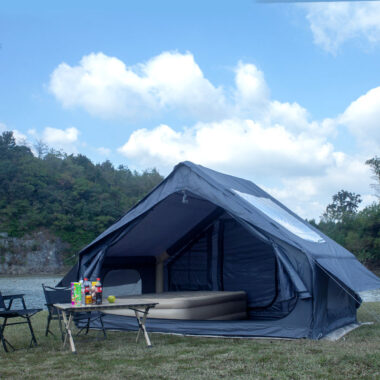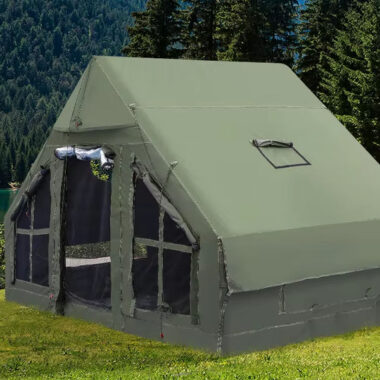⚙️ 1. What OEM and ODM Mean in Tent Production
When sourcing camping tents, you’ll often hear the terms OEM (Original Equipment Manufacturer) and ODM (Original Design Manufacturer).
OEM means the factory produces tents based on your own design and branding.
ODM means the factory already has existing designs you can customize and sell under your brand.
Choosing between the two depends on your goals. If you want a unique product line, OEM is ideal; if you need faster market entry, ODM saves time and cost.
A professional tent factory can offer both, ensuring full flexibility for brands, distributors, and retailers.
🧩 2. Stage One — Concept and Design Confirmation
The OEM/ODM process starts with understanding your needs: tent type, usage scenario, target market, and budget.
Factories use CAD software to build structure models, define pole geometry, and calculate fabric area.
Once the 3D concept and drawings are approved, the factory estimates material cost, colorways, logo options, and packaging.
At this stage, transparent communication ensures your product meets both functional and brand requirements before moving forward.
🧵 3. Stage Two — Material Selection and Sampling
Sampling brings your design to life.
You’ll choose the main fabric (polyester, nylon, or canvas), waterproof coating (PU or silicone), floor materials (Oxford or PE), and pole systems (aluminum or fiberglass).
The factory then creates a prototype sample, usually within 7–10 days.
A good OEM camping tent supplier provides photos, dimensions, and test data for fabric weight, waterproof rating, and seam quality.
You can request minor adjustments until the pre-production sample (PPS) is finalized.
🏗️ 4. Stage Three — Mass Production and Quality Control
After PPS approval, the factory begins bulk production.
Cutting, sewing, seam taping, and printing are all managed under strict QC supervision.
Each workstation checks:
Stitch density and reinforcement points
Seam sealing accuracy
Zipper alignment and door tension
Label and logo placement
During production, many suppliers perform inline inspections, ensuring early detection of defects before packaging.
This step guarantees every tent meets export standards for durability and waterproof performance.
📦 5. Stage Four — Packaging and Logistics
After inspection, tents are packed into individual carry bags or retail boxes with barcodes and manuals.
Cartons are clearly labeled for SKU tracking and stacked on export pallets.
Factories also optimize carton dimensions to save shipping costs.
Professional manufacturers assist with FOB, CIF, or EXW terms, and some even manage full logistics chains to major ports or warehouses.
For global buyers, smooth export coordination is as important as production quality.
🧪 6. Stage Five — Testing and Final Inspection
Before shipment, tents undergo a final rain test, UV test, and wind-stability evaluation.
Hydrostatic head levels are measured, seams checked for leaks, and poles tested for stress.
A complete QC report with photos and measurements is shared for your confirmation.
This ensures that your brand receives products matching the approved PPS in quality and appearance.
🌍 7. Stage Six — After-Sales and Continuous Improvement
Good factories view cooperation as a long-term partnership.
They maintain design archives for reorders, help with future improvements, and track customer feedback.
If adjustments are needed—such as material upgrades or color updates—the OEM/ODM team can implement them seamlessly in the next batch.
Reliable suppliers also support marketing materials, photography, and certifications upon request, helping your brand build credibility in the outdoor market.
🔍 Final Thoughts
The OEM/ODM production process isn’t just manufacturing — it’s a full collaboration between the client and the tent factory.
Understanding each stage helps you control cost, improve product quality, and create a consistent brand identity.
Working with an experienced camping tent manufacturer ensures your tents are built efficiently, tested thoroughly, and delivered on schedule.








